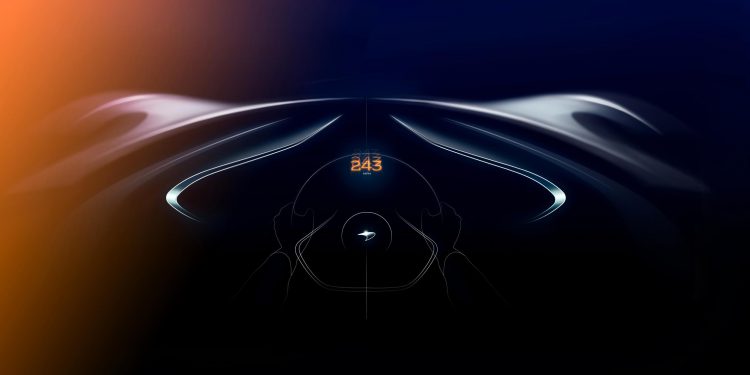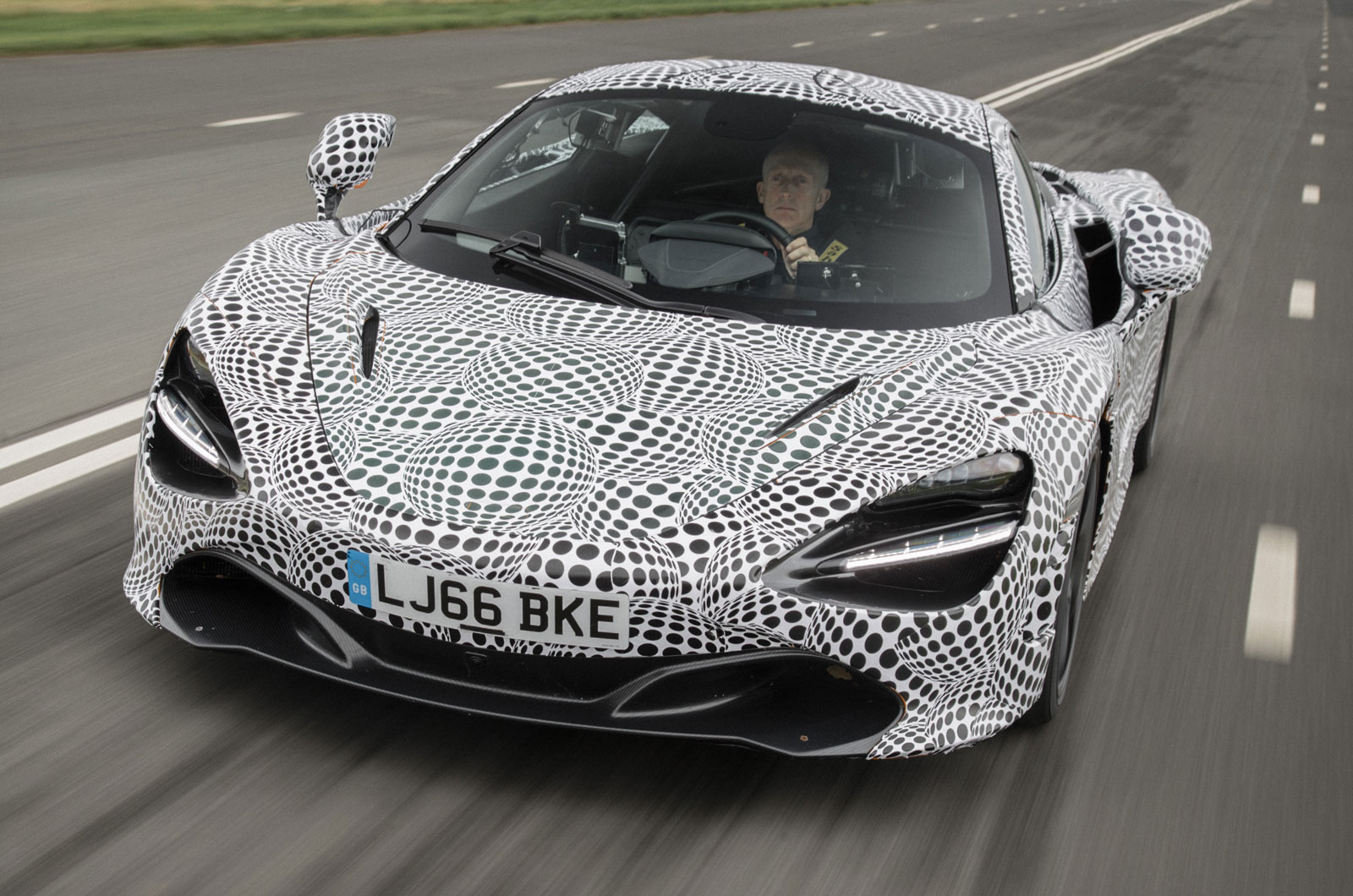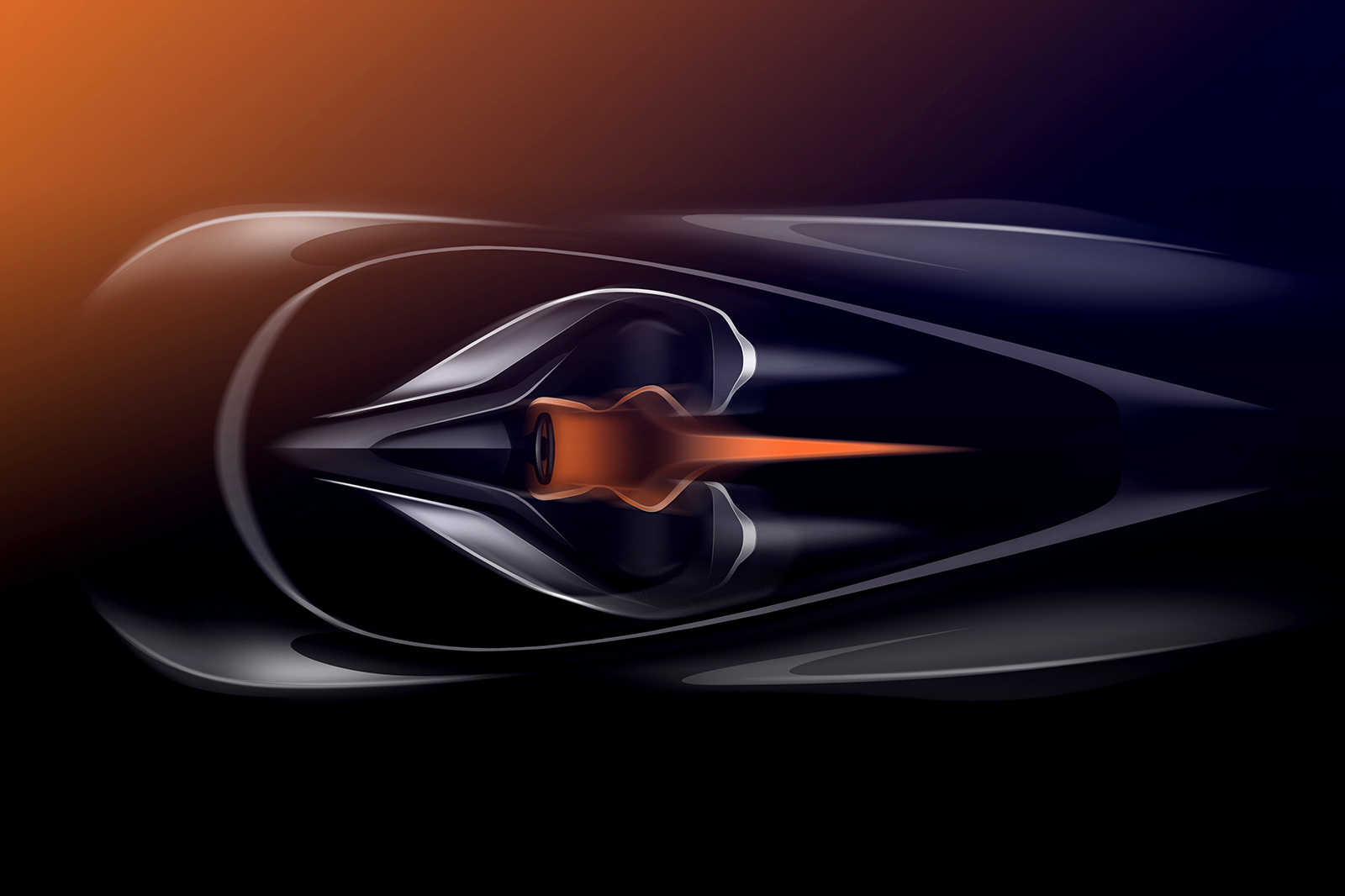This McLaren Is Insanely Fast At 391kph

“Or in the western worlds numbers, it should be about 243 miles per hour, which is still insanely fast if you ask anyone who drives fast cars.”
McLaren says the three-seat hypercar, codenamed ‘BP23’, will be the fastest McLaren ever made, hitting a top speed of, yes, more than 243mph – at which point “it will still be accelerating”. The car will be revealed before the end of the year.
In 1998, the previous three-seat McLaren, the F1, became the world’s fastest production car when Le Mans winner (and now Bugatti test driver) Andy Wallace took the F1 along Volkswagen’s Ehra-Lessien test track, in Germany, at 242mph, exceeding the 231mph the F1 managed in 1993 at the Nardo high-speed bowl in Italy.
The modified 720S (pictured) is the development mule for the three-seat BP23 (standing for bespoke project two, three-seater), the power of which will far outdo the F1’s 627bhp. McLaren’s ultimate series chief Andy Palmer says the BP23’s advanced aerodynamics will “really move things on from an acceleration perspective too”.
Just 106 BP23s will be built when the car goes on sale in 2019, but McLaren is keen to stress that its focus won’t be on the track. Like the track-friendly Senna Ultimate Series model, however, it’ll shun McLaren’s traditional alphanumeric designations for a full name.

“It’s very powerful, more powerful than the [986bhp] P1 GTR,” McLaren CEO Mike Flewitt told Autocar. He also confirmed the car was “a long way” down the road in terms of development, a centre-seat mule having tested for several months. Flewitt added the car would be “easier to get into than an F1” and “feels very natural” when you drive it.
The BP23 will have a hybrid powertrain to augment the power of its twin-turbocharged V8 engine to vast levels, and it also needs significant changes to its carbonfibre passenger cell – which Palmer will only describe as “different” to the 720S’s – to comfortably accommodate three occupants.
Those power levels and the predicted high speeds, though, don’t come without complications. Andy Palmer admits McLaren is “pretty much at the limit of what tyres, as well as other systems, can do”. The realities of running consistently at speeds approaching – or perhaps beyond – 250mph are a significant step onwards again from 200mph from a tyre, energy and aerodynamic perspective. Palmer revealed previously that the goal of this car is “to give customers the ability to have a high level of luxury, bespoke elements on the car, high performance, high speed – a very much road-focused grand tourer”.
“The centre seat is an amazing thing,” Palmer told Autocar. “The attraction is not only the driving position, but you can take two passengers and luggage on a long journey. I’ve been sitting in the back and it’s not a bad place to be.

“Technology has moved on, particularly in carbon, and in our tub and monocell, and how we engineer that to accommodate three seats. It’s not without compromise, it’s not sitting in the back of a Mercedes S-Class, but it’s not a huddled or tight space.” Palmer and his colleagues say that entry and egress to the BP23 is far easier than it was in the F1, too. Cameras might augment mirrors to increase visibility without compromising aerodynamics.
Another of McLaren’s headaches, though, is deciding where to complete the BP23’s high speed runs, which have already been planned into the development process. Using VW’s Ehra-Lessien test track – which has a five mile main straight which you can enter off a curved bend at an easy triple figure speed – is out of the question 20 years on from the F1, given VW has competing brands and it’s where the Bugatti Chiron will eventually prove its top speed.
High speed test track ‘bowls’, meanwhile, even like the one at Nardo that scrubbed 10mph from the F1’s pace, prevent cars of the BP23’s potential from reaching their top speed. Palmer says he “would like to run on Tarmac”, but beyond some of the world’s longest runways, or some road race events where the safety of drivers becomes an issue should anything go wrong, McLaren might even have to look to salt flats like those at Bonneville. Even there, though, tires become an issue, because of the lower grip levels. And while Bugatti can use Ehra-Lessien for customer events, McLaren will have to think where its 106 BP23 buyers can experience close to their car’s full potential.

The rebirth of a three-seat McLaren originated with a single customer request, which McLaren decided could be put into limited-series production. Some 106 cars were confirmed and have all been sold at around £2 million apiece, before visiting McLaren Special Operations for bespoke options. Unlike the Senna or the P1 – which are way more track-biased than the BP23 grand tourer – we’re not expecting a GTR version.
Interestingly, Flewitt said: “It would be fascinating to do a centre seat track car. It would be perfect on a track, and easier to do as you need all sorts of legislation on the road. It’s not planned, or been asked for; we’re not planning one but it’s been thought of. I’m surprised someone hasn’t asked MSO.”
If lap times aren’t the way McLaren will measure the BP23’s performance (and they’re not), that leaves acceleration or top speed as the two measures by which the BP23 will be the fastest-ever McLaren. Palmer won’t be drawn on power outputs or even powertrain specifics, a highly boosted development of the 720S’s 4.0-litre V8 engine is expected, supplemented by a hybrid system whose primary mission will be to eliminate turbo lag.






